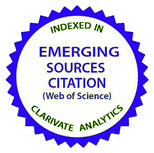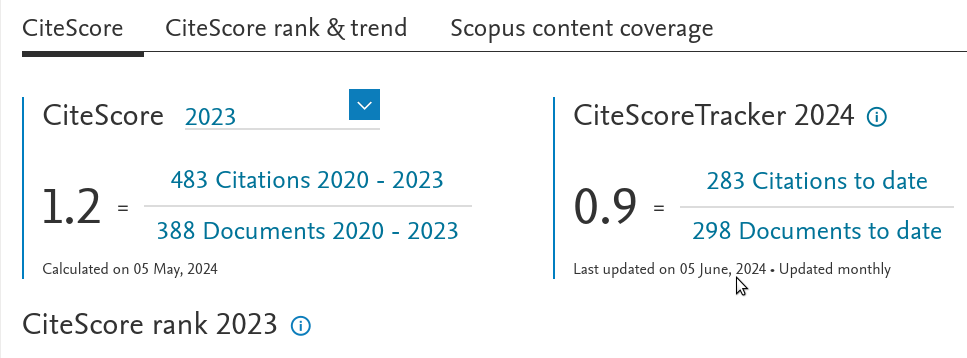Закономірності фрагментації фулерену С60 за даними лазерно-десорбційної мас-спектрометрії та квантової хімії
DOI:
https://doi.org/10.15407/ujpe57.7.767Ключові слова:
-Анотація
У роботі представлено експериментальні та теоретичні результати дослідження закономірностей фрагментації фулерену С60. Деструкцію С60, нанесеного методом термічного осадження на кремнієву підкладку, вивчено методом лазерно-десорбційної мас-спектрометрії при різних значеннях потужності лазера. Показано, що інтенсивність іонів [С60]+ в мас-спектрі лінійно зростає при збільшенні потужності лазера від 30% до 70% максимальної потужності, тоді як відносний ступінь його фрагментації спочатку збільшується, а потім досягає насичення при відносної потужності лазера 50%. Запропоновано два можливих механізма іонізації фулерену С60.
Методом квантової хімії розраховано електронну будову молекулярних C60–2n і катіонних [C60–2n]+ форм фулеренів, де n = 0,1,2,3,4 визначає кількість втрачених фрагментів С2. Визначено значення граничних молекулярних орбіталей (EВЗМО і EНВМО), адіабатичні потенціали іонізації і спорідненість до електрона.
Посилання
O. Šedo, M. Alberti, J. Janča, and J. Havel, Carbon 44, 840 (2006).
https://doi.org/10.1016/j.carbon.2005.10.025
S.V. Snegir, T.Yu. Gromovyi, and V.O. Pokrovskyi, Metallofiz. Noveish. Tekhnol. 28, 255 (2006).
D. Hathiramani, P. Scheier, H. Bräuning, R. Trassl, E. Salzborn, L.P. Presnyakov. A.A. Narits, and D.B. Uskov, Nucl. Instrum. Methods B 212, 67 (2003).
https://doi.org/10.1016/S0168-583X(03)01481-2
V. Meza-Laguna, E.V. Basiuk (Golovataya-Dzhymbeeva), E. Alvarez-Zauco, T. Gromovoy, O. Amelines-Sarria, M. Bassiouk, I. Puente-Lee, and V.A. Basiuk, J. Nanosci. Nanotechnol. 8, 1 (2008).
https://doi.org/10.1166/jnn.2008.205
A.D. Becke, J. Chem. Phys. 98, 5648 (1993).
https://doi.org/10.1063/1.464913
C. Lee, W. Yang, and R.G. Parr, Phys. Rev. B 37, 785 (1988).
https://doi.org/10.1103/PhysRevB.37.785
M.W. Schmidt, K.K. Baldridge, J.A. Boatz, S.T. Elbert, M.S. Gordon, J.H. Jensen, S. Koseki, N. Matsunaga, K.A. Nguyen, S.J. Su, T.L. Windus, M. Dupuis, and J.A. Montgomery, J. Comput. Chem. 14, 11, 1347 (1993).
https://doi.org/10.1002/jcc.540141112
A.T. Lebedev, Mass Spectrometry in Organic Chemistry (BINOM Knowledge Laboratory, Moscow, 2003) (in Russian).
G.A. Semenov, E.N. Nikolaev, and K.E. Frantseva, Application of Mass Spectrometry in Inorganic Chemistry (Khimiya, Leningrad, 1976) (in Russian).
M.A. Khodorkovskii, S.V. Murashov, T.O. Artamonova, L.P. Rakcheeva, A.A. Belyaeva, A.S. Melnikov, and A.L. Shakhmin, Zh. Tekhn. Fiz. 79, 147 (2009).
R.L. Murry, D.L. Strout, G.K. Odom, and G.E. Scuseria, Nature 366, 665 (1993).
https://doi.org/10.1038/366665a0
R.L. Murry and D.L. Strout, Int. J. Mass Spectrom. Ion Proc. 138, 113 (1994).
https://doi.org/10.1016/0168-1176(94)04037-0
K.R. Bates and G.E. Scuseria, Theor. Chem. Acc. 99, 29 (1998).
https://doi.org/10.1007/s002140050299
B. Kubler, E. Millon, J.J. Gaumet, and J.F. Miller, Fullerene Sci. Technol. 4, 1247 (1996).
##submission.downloads##
Опубліковано
Як цитувати
Номер
Розділ
Ліцензія
Ліцензійний Договір
на використання Твору
м. Київ, Україна
Відповідальний автор та співавтори (надалі іменовані як Автор(и)) статті, яку він (вони) подають до Українського фізичного журналу, (надалі іменована як Твір) з одного боку та Інститут теоретичної фізики імені М.М. Боголюбова НАН України в особі директора (надалі – Видавець) з іншого боку уклали даний Договір про таке:
1. Предмет договору.
Автор(и) надає(ють) Видавцю безоплатно невиключні права на використання Твору (наукового, технічного або іншого характеру) на умовах, визначених цим Договором.
2. Способи використання Твору.
2.1. Автор(и) надає(ють) Видавцю право на використання Твору таким чином:
2.1.1. Використовувати Твір шляхом його видання в Українському фізичному журналі (далі – Видання) мовою оригіналу та в перекладі на англійську (погоджений Автором(ами) і Видавцем примірник Твору, прийнятого до друку, є невід’ємною частиною Ліцензійного договору).
2.1.2. Переробляти, адаптувати або іншим чином змінювати Твір за погодженням з Автором(ами).
2.1.3. Перекладати Твір у випадку, коли Твір викладений іншою мовою, ніж мова, якою передбачена публікація у Виданні.
2.2. Якщо Автор(и) виявить(лять) бажання використовувати Твір в інший спосіб, як то публікувати перекладену версію Твору (окрім випадку, зазначеного в п. 2.1.3 цього Договору); розміщувати повністю або частково в мережі Інтернет; публікувати Твір в інших, у тому числі іноземних, виданнях; включати Твір як складову частину інших збірників, антологій, енциклопедій тощо, то Автор(и) мають отримати на це письмовий дозвіл від Видавця.
3. Територія використання.
Автор(и) надає(ють) Видавцю право на використання Твору способами, зазначеними у п.п. 2.1.1–2.1.3 цього Договору, на території України, а також право на розповсюдження Твору як невід’ємної складової частини Видання на території України та інших країн шляхом передплати, продажу та безоплатної передачі третій стороні.
4. Строк, на який надаються права.
4.1. Договір є чинним з дати підписання та діє протягом усього часу функціонування Видання.
5. Застереження.
5.1. Автор(и) заявляє(ють), що:
– він/вона є автором (співавтором) Твору;
– авторські права на даний Твір не передані іншій стороні;
– даний Твір не був раніше опублікований і не буде опублікований у будь-якому іншому виданні до публікації його Видавцем (див. також п. 2.2);
– Автор(и) не порушив(ли) права інтелектуальної власності інших осіб. Якщо у Творі наведені матеріали інших осіб за виключенням випадків цитування в обсязі, виправданому науковим, інформаційним або критичним характером Твору, використання таких матеріалів здійснене Автором(ами) з дотриманням норм міжнародного законодавства і законодавства України.
6. Реквізити і підписи сторін.
Видавець: Інститут теоретичної фізики імені М.М. Боголюбова НАН України.
Адреса: м. Київ, вул. Метрологічна 14-б.
Автор: Електронний підпис від імені та за погодження всіх співавторів.













